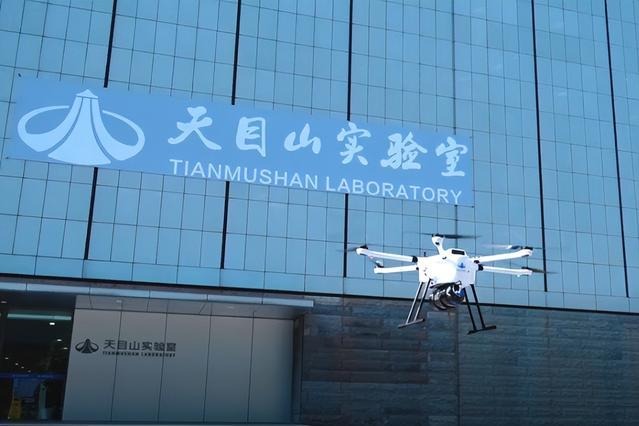BRIGHTER PICTURE PAINTED FOR PIG FARMERS
Pork prices falling, stocks growing after disease outbreak





Wen Jian, who raises pigs in Luchuan county, Guangxi Zhuang autonomous region, at one time last year could count more than 10,000 of the animals among his livestock assets.
But following an outbreak of African swine fever in the county in July, his stock fell to about 400, bringing him a loss of 13 million yuan ($1.85 million).
After hesitating for several months, Wen decided to replenish his stock. He was attracted by the potential profits offered by soaring pork prices and a tight supply.
After a meeting on Nov 5 organized by the county government with the aim of boosting pork production, Wen purchased more than 1,000 piglets, buoyed by the local authorities' determination to rejuvenate the pig-raising business in Luchuan, which had been a pork production base.
Wen, president of the Luchuan Pig Raising Association, said: "I think the decision to replenish my stock will help me make more money. My goal is to recover my losses from the swine fever within three years, and I am very confident of doing that."
Like Wen, many people who raise pigs in Luchuan have started, or are planning, to replenish their stocks amid the prospects of higher profits and with improved confidence that the African swine fever threat will be conquered.
By early this month, 130 pig farmers had resumed production, with 65 of them breeding animals from other areas. Some companies are also building new high-standard farms to raise pigs, according to the county government.
At the Nov 5 meeting, which was attended by more than 400 people, including local government officials, veterinary experts and pig farmers, the county announced all-out efforts to rejuvenate the pork industry, with the aim of increasing local stocks to 500,000 before the Lunar New Year in late January, and to 1 million by August.
It is expected that by early 2021, local stocks will stand at 1.3 million, the level before the African swine fever outbreak.
Assistance measures include paying 300 yuan per head for every sow bought by farmers, and providing an insurance payment of 3,000 yuan for each such animal in case of loss.
The county authorities will also buy special equipment to test for African swine fever, with total investment in restoring pork production amounting to 60 million yuan.
In addition to Luchuan, many pork producers nationwide have stepped up efforts to restore output following heavy losses. By late last month, 24 provincial-level areas had announced measures to encourage pork production, and there were signs that output was rising, according to the Ministry of Agriculture and Rural Affairs.
In September, pig stocks at major farms had risen by 0.6 percent, compared with the previous month, Wei Baigang, chief of the ministry's Development and Planning Department, said at a news conference at the end of last month. Meanwhile, the number of breeding sows in stock rose by 3.7 percent compared with August.
The figures were based on monitoring of pig farms producing more than 5,000 animals annually.
With production beginning to rise, ending a slump in supplies since early this year, pork prices started to stabilize and even fall this month.
From Nov 8 to 14, the average wholesale price for pork was about 50 yuan a kilogram, a fall of 4.4 percent compared with the previous week, according to monitoring by the ministry. However, compared with the same week last year, the price had risen by 157 percent.
"Production of pork across China has, in general, stopped dropping and has started to rise," Wei said. "Output may return to normal levels next year."
Pork is the most popular meat in China, which produces half the world's total. But following the African swine fever outbreak, production fell significantly, along with accompanying losses for farmers. The disease is almost always fatal for pigs, but cannot be transmitted to humans.
Some industry insiders estimate the disease has caused a gap between supply and demand of more than 10 million metric tons this year, or at least 20 percent of the country's total pork output, and pork prices will remain high for several months at least.
In Luchuan, which is located in a subtropical area, a local breed of pig has traditionally been raised for its unique taste. However, the disease almost drove the breed to extinction.
By the end of last month, local pig stocks had been reduced to just 200,000. Tight supply caused pork prices in the county to soar to over 80 yuan a kg, more than double the level last year, resulting in reduced consumption of the staple.
Li Guan, a 54-year-old pork vendor at a local market, said, "Business has been very bad recently, as fewer people are buying pork."
Like many in Luchuan, Li raises pigs for a living. However, only three of the 210 he kept last year survived the African swine fever outbreak. Along with many other pig breeders in the county, he has been hesitant in replenishing his stock for fear of another outbreak.
Lan Xiaodong, deputy director of the county government's general office, said, "There is an urgent need to promote the restoration of pig raising in Luchuan to bolster sustainable development of the local pork industry and improve people's livelihoods."
He said the local government has drawn up a special plan that includes providing subsidies and insurance to cover breeding sows brought in from other areas and buying advanced virus testing equipment to aid disease prevention and control. It will also invest 40 million yuan to relocate the national-level site for conserving the local breed to an area that is more suitable.
The county also plans to build an industrial park for pork production, with the inclusion of high-standard slaughterhouses and freezers to improve the security of supplies.
Lan said the main obstacles to restoring pork production in the county include a lack of funding and expertise, adding that the ministry needs to provide the finances and talent required to help improve disease prevention and control and to promote modern technology in local pig raising.
To ensure the stable development of pork production, the plan also requires authorities to strictly carry out quarantine measures such as slaughtering all pigs suspected to be carrying African swine fever to prevent the disease spreading, and promptly providing subsidies to farmers whose pigs have to be slaughtered.
After the plan was announced, Wen, from the Luchan Pig Raising Association, began preparing to replenish his stock. He has chosen a new site for a pig farm to eliminate the risk of disease spreading through cross-infection, and will ensure the premises are well-secured with high walls, fences and insect-proof nets to minimize the risk of disease transmission.
"I think pork prices will remain high for some time, but I am confident that my business will recover," he said.
Similar efforts to replenish stocks have been made in many other areas of the country.
Cong Peiyuan, vice-president of Dabeinong Agricultural and Food Co in Harbin, Heilongjiang province, said a pig farm owned by the company in Beizhen, Liaoning province, was hit by African swine fever in October last year, causing a loss of more than 100 million yuan. In early December last year, local agricultural authorities lifted quarantine measures imposed on the farm.
The company then started preparing to resume pork production, including installing a number of disease control and prevention facilities, such as a personnel quarantine site, a material transfer station, a sterilization center and a single-direction showering system.
Management of personnel and flow of materials has also been improved. For example, anyone entering the farm must complete a 20-minute sterilization-and-showering process, and may only carry small devices, such as mobile phones, to minimize the risks of infecting the pigs.
Cong said the company has also produced a manual on the control and prevention of African swine fever, and distributed it to all employees.
Zhu Zengyong, a pork industry analyst at the Chinese Academy of Agricultural Sciences, said that although many pig breeders are preparing to replenish their stocks, some of them, especially small operators, are finding this difficult.
"Most farms raising pigs in China are small or medium-sized, and such farmers often have difficulty in affording to upgrade their facilities to restore production," he said.
"In addition, pig prices, including those for piglets and sows, have doubled due to the supply shortage, compared with before the African swine fever outbreak last year, which can also restrict efforts to replenish stocks."
He added that with pig stocks nationwide rising, the chances of further outbreaks of the disease will increase, so strict control and preventative measures are necessary.
With the heavy losses caused by the disease, insiders have proposed that the pig breeding industry be upgraded, including improving disease control and prevention facilities and sanitary conditions, to better prepare against future outbreaks.
Qiu Huaji, a researcher of infectious animal diseases at the Harbin Veterinary Research Institute, said the African swine fever outbreak shows the importance of improving biosecurity at farms, rather than just relying on drugs and vaccines for prevention and control, as many pig breeders in China do. No vaccine is available to prevent the disease.
"Biosecurity systems should be established at all farms where pigs are raised, whether large or small, to prevent and control disease," he said. "Meanwhile, pig breeders should improve conditions for the animals so that they live in a healthier and more comfortable environment, which will also help disease control and prevention."





Today's Top News
- China remembers victims of Nanjing Massacre, 88 years on
- New plan will be a road map for a stronger future
- Taiwan's character of the year a vote against confrontation
- Strengthened resilience key for economy
- Video sheds new light on Japan's wartime atrocities
- Xi: World yearns for peace, trust more than ever


























